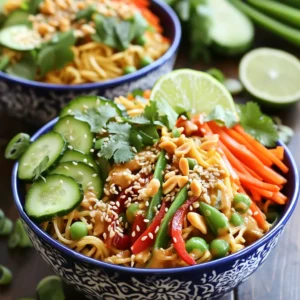
Thai Peanut Noodles
Enjoy a delicious twist on a classic dish with these Thai Peanut Noodles! This vibrant recipe features crunchy vegetables and a creamy peanut sauce, making it perfect for any meal. In just 25 minutes, you can create a mouthwatering dish that’s sure to impress. Click through to discover how to whip up this delightful recipe and elevate your dinner game with fresh flavors and colorful presentation!